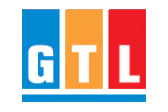
Accessible Airport, Building, Railway station, Metro station and Bus Station
We all want to travel, discover new places, and go on expeditions. However, due to inaccessible infrastructure, a great chunk of India’s population finds it difficult to travel from one destination to another. According to the 2001 Census, there are nearly 21 million differently-abled persons in the country, but just 3% of public spaces are accessible to them.
Making your way around a bus or train, especially when it’s overcrowded, can be tough. Think how much tougher it would be if you couldn’t even see.
Blind or visually impaired people may be at risk from seats, railings, other passengers, and their luggage. One would expect that people would be considerate enough to alert them of upcoming obstacles or direct them to a seat, but this is not always the case.
This is why Eminent Tactiles orienting solutions, such as Tactile Ground Surface Indicator (TGSI’s), are so significant.
Eminent Tactiles is on a journey to create this distant memory. Not only we are attempting to create inclusive neighborhoods, but we are also educating people about various disabilities.
Trains and buses are some of the most prominent ways to travel, especially when traveling great distances. It’s a whole different story for the differently-abled. Uneven flooring, a lack of ramps, and a lack of navigational aids are just a few of the issues that they face when traveling.
Sensors installed on buses and trains would allow people with vision loss to move in a safer and more independent manner.
Even while this cutting-edge technology has the potential to provide travelers with a whole new experience, it will take time for firms to accept it and integrate it across their fleets. However, some of the existing restrictions are somewhat simple, providing little incentive for businesses to use cutting-edge solutions.
To make travel simpler for the visually handicapped, we included a number of features in railway stations and trains. Platform indications on stair railings, tactile indicators, surrounding the station enabling the blind to navigate easily, train schedules, seat and coach numbers in Braille, and Braille menu cards at all food outlets inside station bounds are just a few of them.
Typically, tactile pavement can only convey general information to a visually impaired person, such as telling them that they’ve arrived at a station turnoff to a platform. A visually challenged individual, on the other hand, would have no way of knowing which platform they’ve arrived at without either learning the layout of the station or asking a passerby.

An access ramp erected in most public locations will enable them to live independently, as they will no longer be dependent on others to assist them with their mobility.
Reflectors on the stairs should be installed at the long-distance train station’s entrance to assist those with low eyesight. To assist those with Speech and Hearing disabilities, there should be preparations to deploy sign language videos on the premises.
Small initiatives have been taken to make travel more accessible and convenient for everyone. In the future, authorities hope to establish a dedicated assistance desk to assist passengers with specific requirements.
A few pointers for improving accessibility for the blind:
- Reduce the number of barriers at stations and bus terminals.
- Have a simple Wayfinder.
- Audio announcements should be provided in vehicles so that visually impaired passengers can know when they have arrived at their destination.
- The term “universal design” refers to a style of architecture that may be used by persons with a wide range of skills.
- Tactile materials, or materials that promote the sense of touch to perceive them, work wonders in a building that is accessed by blind individuals because a person with low visual ability cannot see the materials within a place.
- Braille, or blind people’s language, is the finest technique to enable them to read a sign or even grasp a plan.
- Some smart houses and gadgets can greatly assist people with disabilities.
- Aside from hearing and feeling items through touch, the sense of smell can also be improved.
- When purchasing tickets, there should be a checkbox that asks if the passenger is blind or visually impaired. If this box is checked, the entire Public Address System should be modified, and such passengers should receive updates about security screening, boarding, special treatment by security staff, Braille or enlarged copies of boarding passes, and so on.
- Extremely bright and glaring light can cause eye strain and be a nuisance for persons with low eyesight.
- Colors can be visualized to some extent by people with low vision. Color and brightness contrast, which is linked to our capacity to perceive depth and movement, can be used to create a contrast.
Examining present station facilities to determine their acceptability for all of your clients may reveal some areas where you might make improvements. Railway stations should include accessible restrooms for people with disabilities as a matter of course.
Providing easy-to-navigate stations for all users, regardless of mobility, vulnerability, or other potential accessibility difficulties, removes physical and mental barriers, making rail travel more accessible to all.
Access to public transit is necessary for independence, and interpersonal interaction is a vital component of that access. Vehicle accessibility will not make a difference unless good services are provided and people have a pleasant attitude toward passengers who use public transit.
A milestone towards a more worthwhile life for persons with disabilities!
Conclusion
HOW CAN WE HELP YOU?
We provide high-quality tactile solutions for visually impaired people including accessibility products, architectural products, street furniture, engineering components. Our primary focus is on tactile indicators for accessibility.
We value your support and look forward to servicing you.
Tactile indicators, or Tactile Ground Surface Indicators (TGSI), are raised surfaces that guide visually impaired individuals safely through public spaces like airports, railway stations, and bus terminals. They help in navigation, alerting users to hazards, stairs, and platform edges.
Accessibility can be improved with ramps, Braille signage, tactile indicators, audio announcements, reflective stair markers, accessible restrooms, and dedicated assistance desks. These solutions help visually impaired and mobility-challenged passengers travel independently and safely.
Accessible infrastructure ensures that all passengers, including visually impaired or differently-abled individuals, can navigate stations safely. It reduces physical and mental barriers and promotes inclusivity in public transport.
Braille signs convey critical information like platform numbers, restroom locations, ticket counters, and food outlets. They enable visually impaired travelers to independently navigate public spaces without constantly seeking assistance.
Simple solutions include reducing barriers, providing clear wayfinding, audio announcements in vehicles, tactile flooring, high-contrast markings, and accessible restrooms. Even small initiatives make a significant difference for people with disabilities.
Tactile solutions guide visually impaired passengers safely, helping them identify platforms, stairs, exits, and obstacles. They reduce accidents, improve independence, and enhance overall travel safety.
Yes, standards like the ADA (Americans with Disabilities Act) and guidelines from the Indian Ministry of Social Justice and Empowerment provide requirements for tactile indicators, ramps, Braille signage, audio announcements, and accessible restrooms.
Companies like Eminent Tactiles supply high-quality tactile indicators, Braille signage, and other accessibility products suitable for airports, railway stations, bus terminals, and public buildings. They offer solutions for both safety and compliance.

offer now at
Our Clients






































